How old Ugandan negatives are bringing families back to life
Ntare Guma Mbaho Mwine has made it his mission to preserve and exhibit the work of the late Ugandan studio photographer Kibaate Aloysius Ssalongo, who recorded the lives of people from the rural town of Mbirizi.
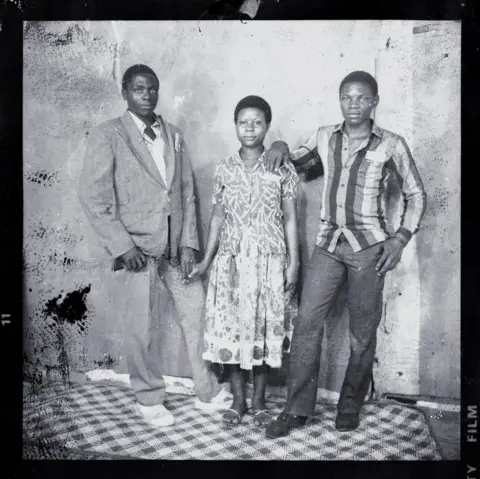 Ssalongo/Mwine
Ssalongo/MwineLiving in a time when images are so casually made and stored on a phone, it is easy to forget how fragile and precious a picture once was.
A faded and frayed photograph or a damaged negative might be the only connection someone has with a long-missed relative.
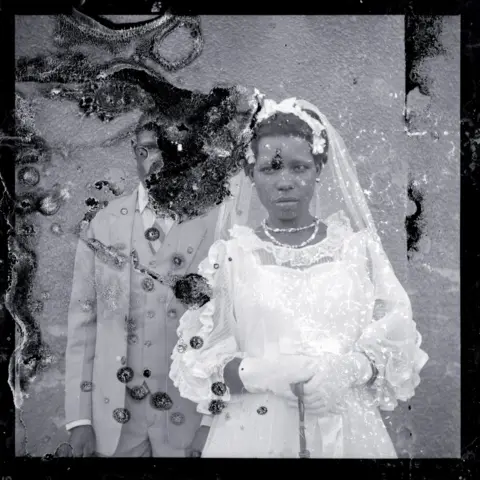 Ssalongo/Mwine
Ssalongo/MwineOr sometimes people hang on to the memory of the photograph itself being taken, the print having been lost in the packing and unpacking of possessions that comes with moving.
All these feelings are captured in this retrospective of Ssalongo's work.
A keen photographer, Mwine, who was born in the US but has roots in Uganda, came across Ssalongo's studio by chance in 1999. His car had broken down in Mbirizi and he had some time to kill.
He was invited inside and in the darkroom the Ugandan pulled out one of several sacks full of hundreds of deteriorating negatives.
This was a visual archive of the local residents dating back to the 1960s.
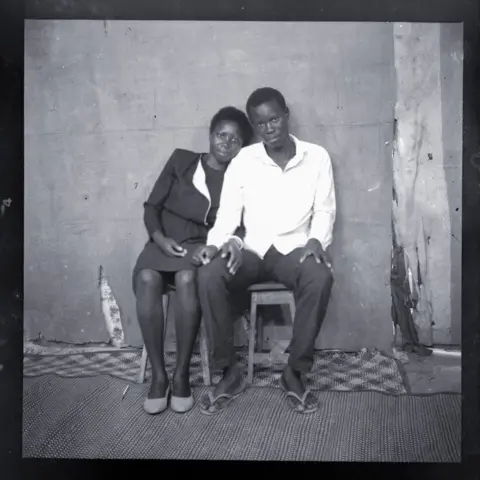 Ssalongo/Mwine
Ssalongo/Mwine"I was astounded because his work was just stunning," Mwine told the BBC's Focus on Africa radio programme.
As Mbirizi town was several hours' drive from the bustling capital, Kampala, "he was the only person for miles around who had a camera. So he was famous because everyone who wanted a picture had to come to his studio."
And the people featured were not wealthy.
"They were the farmers and local tradesmen. It's remarkable to see a window into that world and the pride that people had in their work and how Kibaate [Ssalongo] depicted and captured moments of intimacy between people."
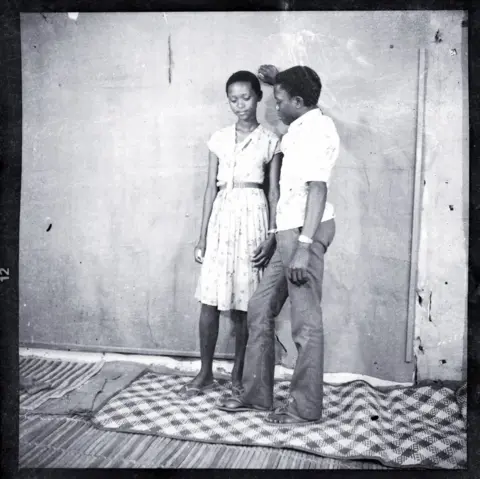 Ssalongo/Mwine
Ssalongo/MwineMwine struck up a lasting friendship with the photographer and promised to restore and exhibit his images.
Ssalongo died in 2006 at the age of 67 but the project continued. It culminated in Memories of Love Returned, a roadside exhibition of more than 5,000 prints recently shown, for the first time, in Mbirizi.
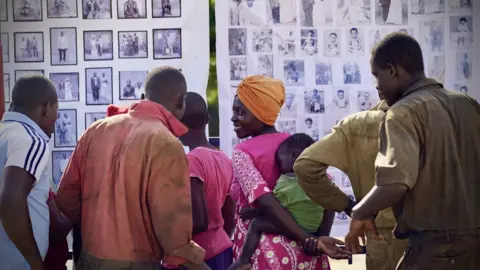 Mwine
MwineThe boards displaying the pictures stretched for more than 100m and people came from across the area to find out if they could see themselves or their friends and relatives.
"It's the return of memories lost or memories from the past that they'd forgotten," Mwine said.
 Ssalongo/Mwine
Ssalongo/MwineOne visitor to the exhibition, Johnson Makanga, had no visual memory of his father as he had died when he was very young. But his uncle spotted the long-lost picture (above), which also featured his mother and aunt, who are both now also dead.
"Johnson was just blown away that he was seeing his father for the first time."
There was a sense of loss but also of gratitude as he "could see himself in his father".
Two other men, brothers Kukumba Emmanuel and Katerega Isaac Muguzi, discovered a picture of their father who had just become an MP for the local area when it was taken in 1962.
 Ssalongo/Mwine
Ssalongo/MwineLubyayi Martin Onesmus Muguzi (above) was the first MP for the Lwengo constituency, which included Mbirizi. The picture was taken by Ssalongo on the day that Muguzi received his first pay cheque for being a legislator.
His sons "were astounded to see their father as a young man", Mwine says.
And Nalongo Teddy recognised her lost wedding photograph from 40 years ago.
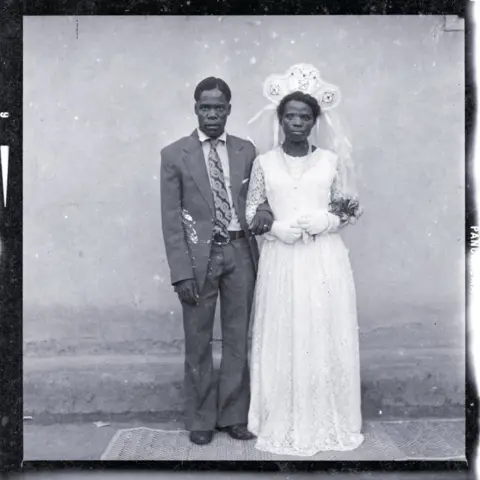 Ssalongo/Mwine
Ssalongo/MwineShe also found a picture of her daughter who she had brought to the studio. She did not have enough money to buy the print at the time.
As with anyone who recognised themselves or a relative in a picture, Mwine gave her the prints once the exhibition had finished.
As people spent time looking at the exhibition, Mwine could see that they were reconnecting with the past.
"Sometimes people can pass and they become distant memories, so what's been great from the exhibition is that the memories have returned in many ways and that's been really heart-warming to see."
Over the last few years, Mwine himself has been photographing the community as a way to mark changes by recreating some of Ssalongo's images.
 Ssalongo/Mwine
Ssalongo/Mwine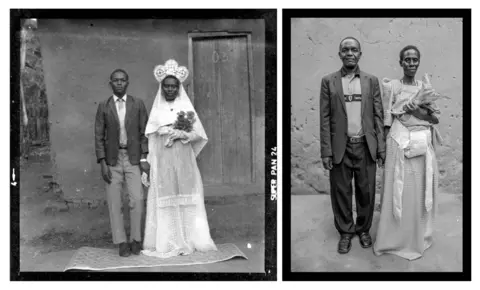 Ssalongo/Mwine
Ssalongo/MwineHe wanted to bring Ssalongo's work back to Mbirizi so that it could be where the exhibition was seen first but now he has ambitions to take it abroad. He is also planning a documentary and a book.
People in Europe and the US will obviously have a different relationship to the pictures but Mwine hopes that the images "will offer mysterious glimpses of memories of love that Ssalongo skilfully captured on film.
"These are the stories and intimate portraits that have too often been lost when writing the history of Uganda."
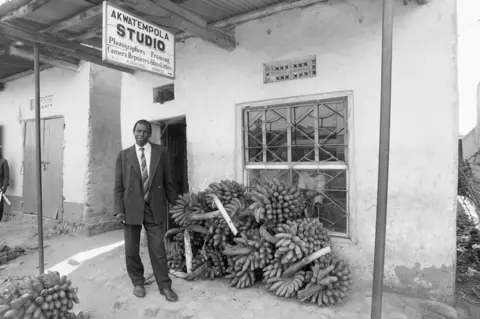 Mwine
MwineGet in touch with Ntare Guma Mbaho Mwine by email at [email protected] if you were photographed by Ssalongo or know someone who was.
